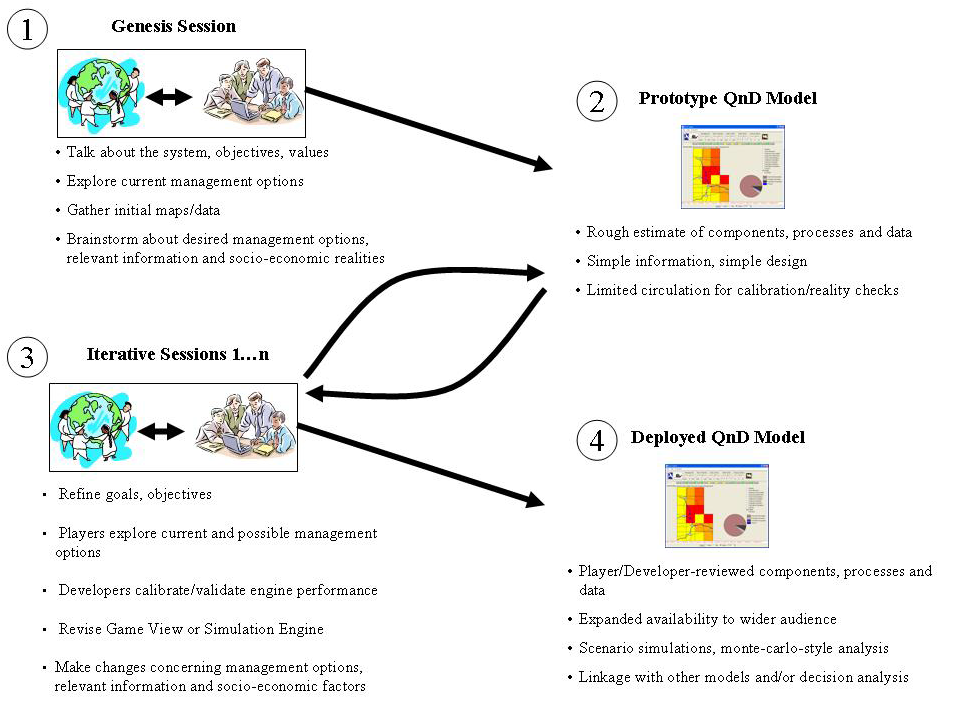Three primary activities are used to develop a QnD model/game:
– First, participants describe the problem and its elements in words and pictures. Through conversations with stakeholders, a series of pictures, stories, experiences, simple diagrams or equations are recorded to get an overall view of the problem.
– Secondly, words and pictures are interpreted into QnD objects. The various system descriptions from the initial meeting are used by the QnD developer to fashion the initial engine and game view sections. An essential element of the QnD model is that the game view should be constructed as much as possible from the user’s perspective while the engine can be a combination of technical and subjective relationships.
– The third primary activity takes place during the second meeting with stakeholders when they discuss and debate the problem situation using the QnD model scenarios in order to identify desirable and feasible actions and changes that would improve the problem situation. This discussion in which stakeholders interact with various QnD elements may highlight three resulting activities: (1) changing the QnD engine to provide a more adequate simulation of measured events; (2) changing the QnD game view to better represent management information requirements or potential actions; or (3) identifying new aspects of the problem situation that were previously hidden from scrutiny. By playing QnD scenarios, users find that they are able to explore the positive and negative repercussions related to each potential management option. Participants are able to discuss both informal “rules of thumb” and technical aspects of management decisions. In addition, QnD enables stakeholders to explore from a variety of perspectives how a decision might impact ecosystem components as well as socio-political and economic factors.

